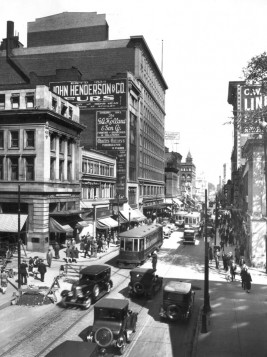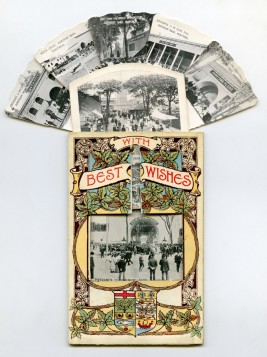Life in Montréal
Sainte-Catherine: A Street at the Heart of Montréal
Sainte-Catherine Street is an essential part of Montréal: the city’s busiest artery, a happening place with something for everyone.
It is familiar ground for both native-born and adopted Montréalers, visited by other Quebeckers making a pilgrimage to the big city and by tourists who have read about it in their guidebooks, Sainte-Catherine is known for its department stores and specialty boutiques, its restaurants and office buildings, its theatres and performance halls, entertainment venues, urban spaces and even its residences.
Sainte-Catherine Street boasts over 250 years of history and today stretches more than 11 kilometres, straddling Saint-Laurent Boulevard. When it was born, back in the 1760s, the street was just a dirt road lined with fields, orchards and houses.
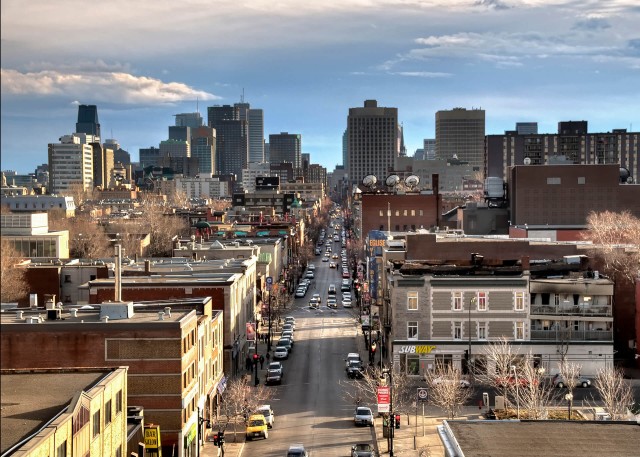
Why Sainte-Catherine?
The origins of its name remain cloudy.
Historian Paul-André Linteau says that the street was originally called Sainte-Geneviève and was renamed Sainte-Catherine in the early 1800s. The name was chosen for a number of reasons, he explains in his book, Sainte-Catherine Street – At the Heart of Montréal Life. It may have been adopted to correspond to the name of Côte Sainte-Catherine, or as a tribute to Catherine de Bourbonnais — a purported illegitimate daughter of Louis XV who lived in Montréal.
Other authors claim that it was Jacques Viger, a roads inspector from 1813 onward and later elected Montréal’s first mayor in 1833, who named it after one of his daughters-in-law. Another possibility is that it comes from the Roman Catholic religious calendar, since St. Catherine’s day is celebrated on November 25 every year.
Whatever its source, Sainte-Catherine wears its name proudly and has kept pace with Montréal’s growth, sharing the city’s ups and downs, its moments of glory and more trying times. But the street’s many faces – economic, residential, commercial and cultural – have always made it a vital part of the city and one that has played a key role in Montréal’s history.
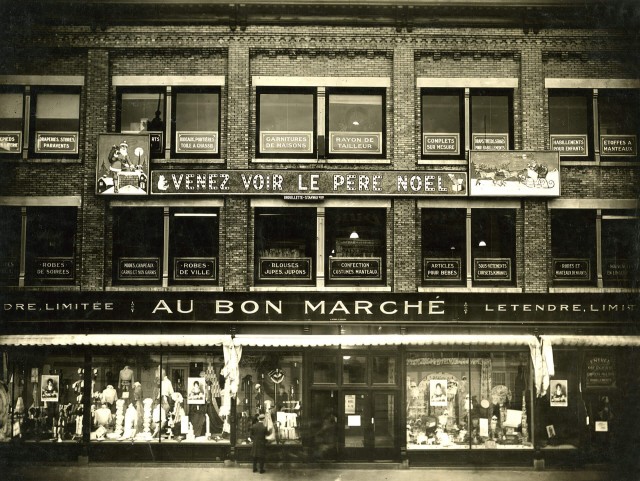
A shopping mecca
It all began with the arrival of the large department stores, from Morgan’s to the Bay, which is in fact located in the building occupied by Morgan’s when it opened in 1891. The presence of many other large stores, from Murphy’s to Scroggie’s, Ogilvy’s, Goodwin’s, Simpson’s, Dupuis Frères, Henry Birks, Woolworth’s, Archambault and Eaton’s, made Sainte-Catherine Street a shopper’s paradise, one still lined with over 1,200 stores today.
Then there are the many office buildings, including the Dominion Square Building, banks such as the Montréal Savings Bank and head offices like Sun Life, which all moved up from Old Montréal to Sainte-Catherine and other nearby streets, making it the new downtown in the early 20th century.
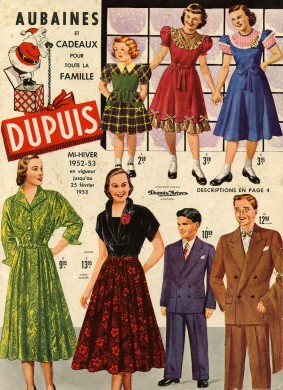
The burgeoning needle trade
Back in those days the street was also home to a number of major clothing firms and factories. Around the intersection of Sainte-Catherine and De Bleury streets and extending northward up Saint-Laurent Boulevard, needle trade workers laboured in the Jacobs, Belgo, Blumenthal and Kellert buildings – the latter the only one of the four that has since disappeared, demolished to make way for Place des Arts in the early 1960s.
The street’s history has been marked by countless cultural, artistic and sporting activities, too. Lots of movie theatres sprang up after the Ouimetoscope opened in 1906. Some of these movie palaces, like the Princess, Loew’s, Capitol, Palace and Granada, were tremendously popular. Plays, vaudeville, burlesque and even striptease shows were performed in halls, cabarets and nightclubs like the Théâtre National, the Princess, Chez Maurice, Le Montmartre, Casa Loma and the famous Gayety theatre, today the Théâtre du Nouveau Monde.
And then there was the Forum, home to the Montréal Canadiens for 70 years, until March 1996. The hockey team’s fans have always poured out onto Sainte-Catherine to celebrate their wins and mourn their losses, with the most recent Stanley Cup victory dating back to 1993.
Rebirth
The final decade of the 20th century was not a good time for the Montréal economy, and its hard times were reflected on Sainte-Catherine Street. Some venerable institutions disappeared, including such grande dames as Dupuis, Simpson’s and Eaton’s. But the street could rely on a strong foundation of 250 years of history, and was certainly not about to give up.
Today it shows renewed vigour and the fashion and culture industries are booming, in particular in the newly developed Quartier des spectacles around Place des Arts. Montréal’s most popular artery will clearly remain the heart of the city for many years to come.
